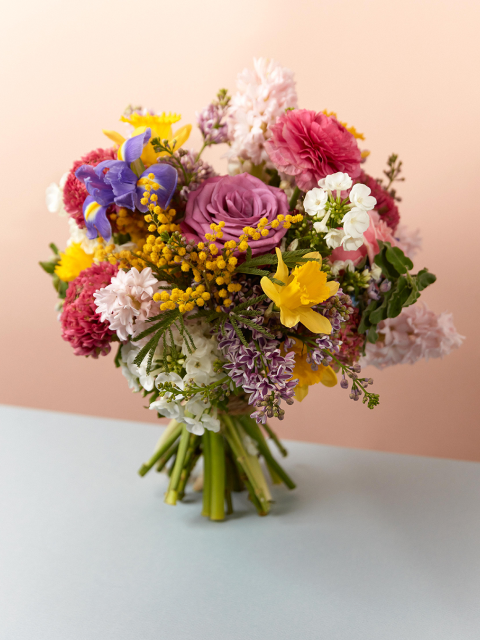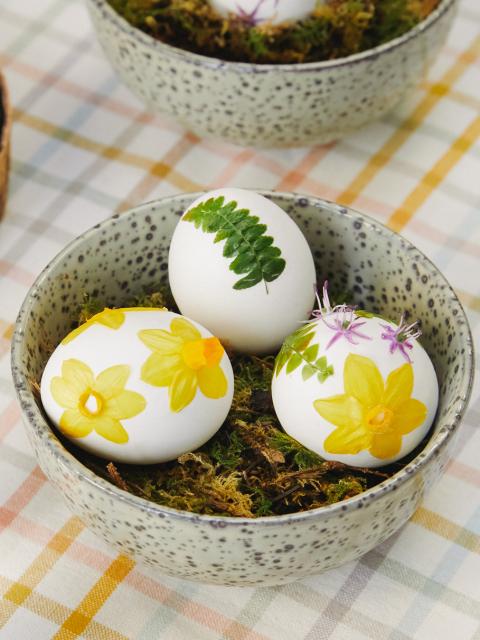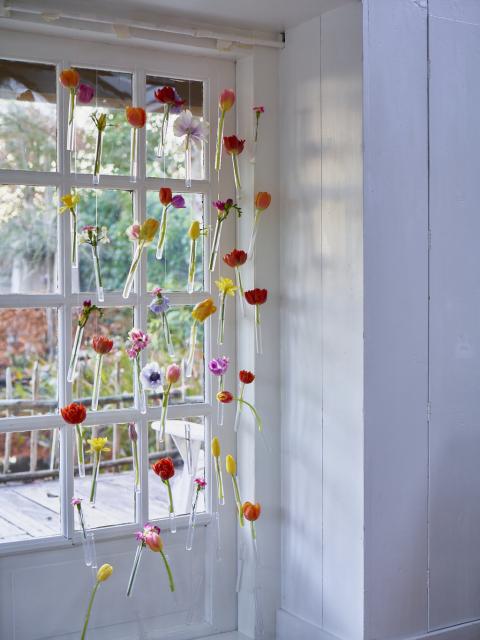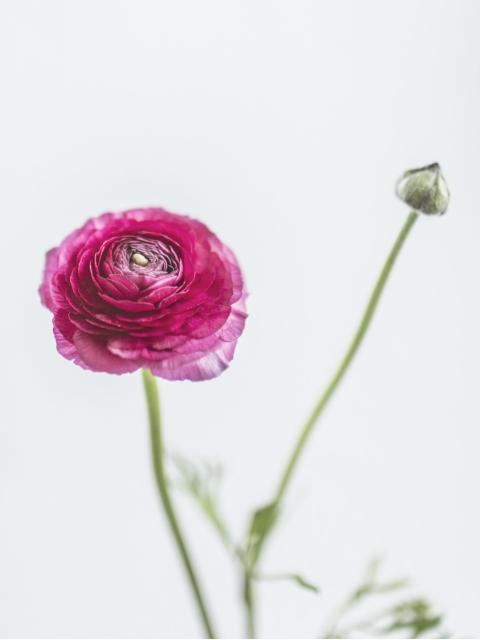WHAT KINDS AND COLOURS OF DAFFODILS are there?
Did you know that there are around 50 different varieties of daffodil? They come in a wide range of colours, ranging from classic yellow, to orange and even pink and white. There are daffodils with leaves, without leaves, with large trumpets and with small, strongly scented and unscented daffodils. In any case, they have one thing in common: they celebrate spring exuberantly and bring a good dose of cheer to any vase they're placed into! The best-known daffodil varieties are:
- Trumpet daffodil: this is the classic daffodil with distinctive, trumpet-shaped crown that emerges from the centre of the flower. The petals are white to cream and the trumpet has a warm, yellow hue.
- Jonquil: Jonquil, also called Narcissus jonquilla, is known for its delicious, sweet fragrance. There are several flowers on a stem and each flower has a distinctive crown with a smaller trumpet shape than that of the classic trumpet daffodil. The petals can be white, yellow or orange.
- Spring flower: spring flower, also called Narcissus bulbocodium or hooped daffodil, is distinguished by its small flowers that resemble dangling bells. This daffodil has a cup-shaped centre surrounded by narrow petals. The colour of this daffodil ranges from bright yellow to white.
WHEN do DAFFODILS FLOWER?
Daffodils are classic spring flowers, but the flowering period of daffodils depends on the species and variety, location and climatic conditions. Generally, daffodils flower in spring, usually from March to May. The peak of flowering is in April. There are also early-flowering varieties, sometimes flowering as early as February. That's why daffodils are known as heralds of spring.
HOW TO CARE FOR DAFFODILS?
Do you have a fresh vase of daffodils sitting on your windowsill? Read the care tips below to enjoy your daffodils for as long as possible:
- Cut the stems diagonally with a sharp, clean knife (remove about 3-5 cm from the stem).
- Put the daffodils in a vase with clean water.
- Are there daffodils in a bouquet with other flowers? Then be mindful of the slime coming out of the daffodil's stems, as it can poison other flowers. Add flower food especially for daffodils to the water, so you are less likely to get slime.
- Do not put daffodils (and other flowers) near the fruit bowl. Fruit naturally gives off ethylene gas, which causes flowers to age faster.
- Do you have the daffodil in your garden? Then check out our daffodil plant guide for the best care tips.
SYMBOLISM OF DAFFODILS AND NARCISSUS
Today, the daffodil is seen as a symbol of hope and new beginnings, as the flower heralds a new season. But the daffodil has a dramatic legend. The daffodil is derived from Narcissus, a beautiful young man from Greek mythology.
Narcissus was so absorbed in hunting that he failed to notice the nymph Echo, who was in love with him. Echo did not let that bother her. She caused Narcissus, when he wanted to drink at a stream, to fall so in love with himself that he stared at his reflection in the water for days. Finally, exhausted, he fell into the water and drowned. In that spot bloomed a flower that equalled Narcissus in beauty: the daffodil. The flower symbolised self-love, vanity and unrequited love.
ORIGIN OF DAFFODILs
The daffodil is part of the Amaryllidaceae (Narcissus family). The flower has a rich history and is found in southern Europe, western Europe and North Africa. In the wild, the daffodil often grows in moist, well-drained soils. The flower thrives in areas with mild winters and dry summers, and can grow on grasslands as well as in mountainous areas and along forest edges. Due to centuries of cultivation and many varieties and cultivars, the daffodil is now known and loved worldwide.
You already knew that the daffodil is a classic spring flower. Want to discover some other spring favourites? Discover 16 classic spring flowers that will give you instant spring fever!


















